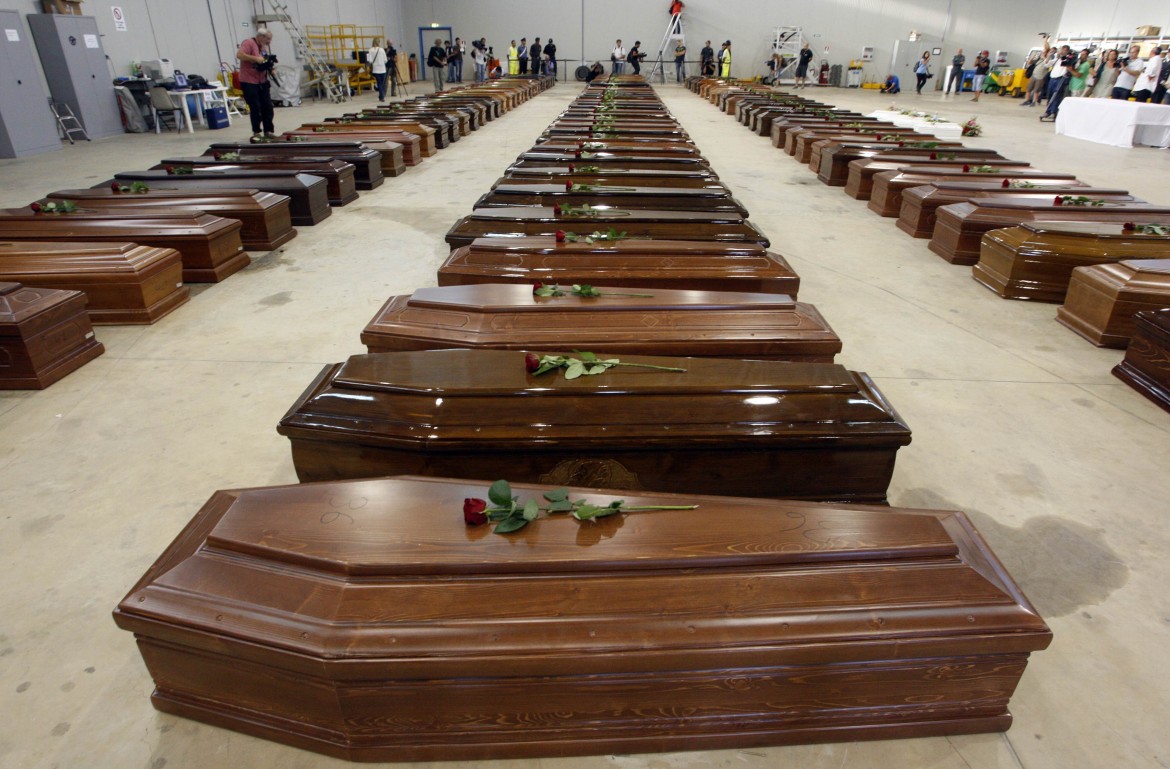Report
The shipwreck that, briefly, shocked Europe
Oct. 3 is a National Day of Remembrance in Italy for the 368 men, women and children who died in the waters off of Lampedusa six years ago after a panic on board caused their vessel to capsize.

The images of innumerable coffins lined up inside a hangar, with four smaller white ones placed in front, have been seen around the world and will remain etched in our collective memory among those which have become symbols of the many tragedies of immigration.
Three hundred sixty-eight people died in the shipwreck that took place on Oct. 3, 2013, near Lampedusa, a tragedy that changed European policy on immigration, at least for a while. After this event, the Italian government, then under Prime Minister Enrico Letta, launched Operation Mare Nostrum, which saved more than 160,000 men, women and children during its 12 months of operation. It was thanks to this mission that Italy “saved Europe’s honor,” as former European Commission President Jean Claude Juncker said many years afterwards.
It was just before 5 a.m., and the boat, carrying between 500 and 550 migrants, was finally approaching the Italian coast, having left on Oct. 1 from the Libyan port of Misrata. The old 60-foot fishing boat was just half a mile off the island of Conigli, and only two kilometers from the port of Lampedusa. In those days, the island was still full of tourists enjoying the last days of summer, the hotels were packed and one could hardly find a free umbrella on the organized beaches. The weather conditions were favorable for the departure of migrant boats: on that same night, the Coast Guard had intervened to rescue two other boats, with a total of 460 people on board. Most likely, nobody expected that a third boat would be coming.
According to the testimonies of the survivors, one of the smugglers set fire to a rag to attract the attention of rescuers, accidentally causing a fire onboard. In the ensuing panic, the migrants moved towards the other side of the fishing vessel all at the same time, causing it to capsize. Hundreds fell into the water; many drowned immediately, but many others remained trapped under the overturned hull.
The first ones to notice what was happening were some local fishermen, who intervened right away, but the rescue efforts were made more difficult by the fuel that had leaked into the water. “I saved myself by clinging to the lifeless bodies of my fellow travelers that were floating next to me,” recounted one of the survivors, Eskindr, a young Eritrean man who was 18 at the time of the tragedy, many years later. “I was in the water for four hours, and during that time I helped other people stay afloat and stay alive.”
The Lampedusa tragedy’s victims were mainly Eritreans. Of the 368 dead, 360 were fleeing Eritrea, while the remaining eight were from Ethiopia. Only 155 were rescued, including 41 minors. After the investigations following the tragedy, on Feb. 13, 2015, a Somali man identified by the survivors as one of the smugglers was sentenced to 30 years in prison for human trafficking, criminal conspiracy and sexual assault. The sentence would be upheld on April 15, 2016, by the Palermo Court of Appeal.
Thanks to the work of the Comitato 3 Ottobre (“October 3 Committee”), established immediately after the tragedy, on March 16, 2016, the Senate finally approved Oct. 3 as a National Day of Remembrance for the victims of migration, celebrated every year in Lampedusa on the day of the shipwreck. Last year, not a single member of the yellow-green government was present at the commemoration. Sadly, one must also point out that no member of the new yellow-red government can be found on the list of participants at this year’s event.
Originally published at https://ilmanifesto.it/la-strage-che-per-un-po-sconvolse-leuropa/ on 2019-10-02
